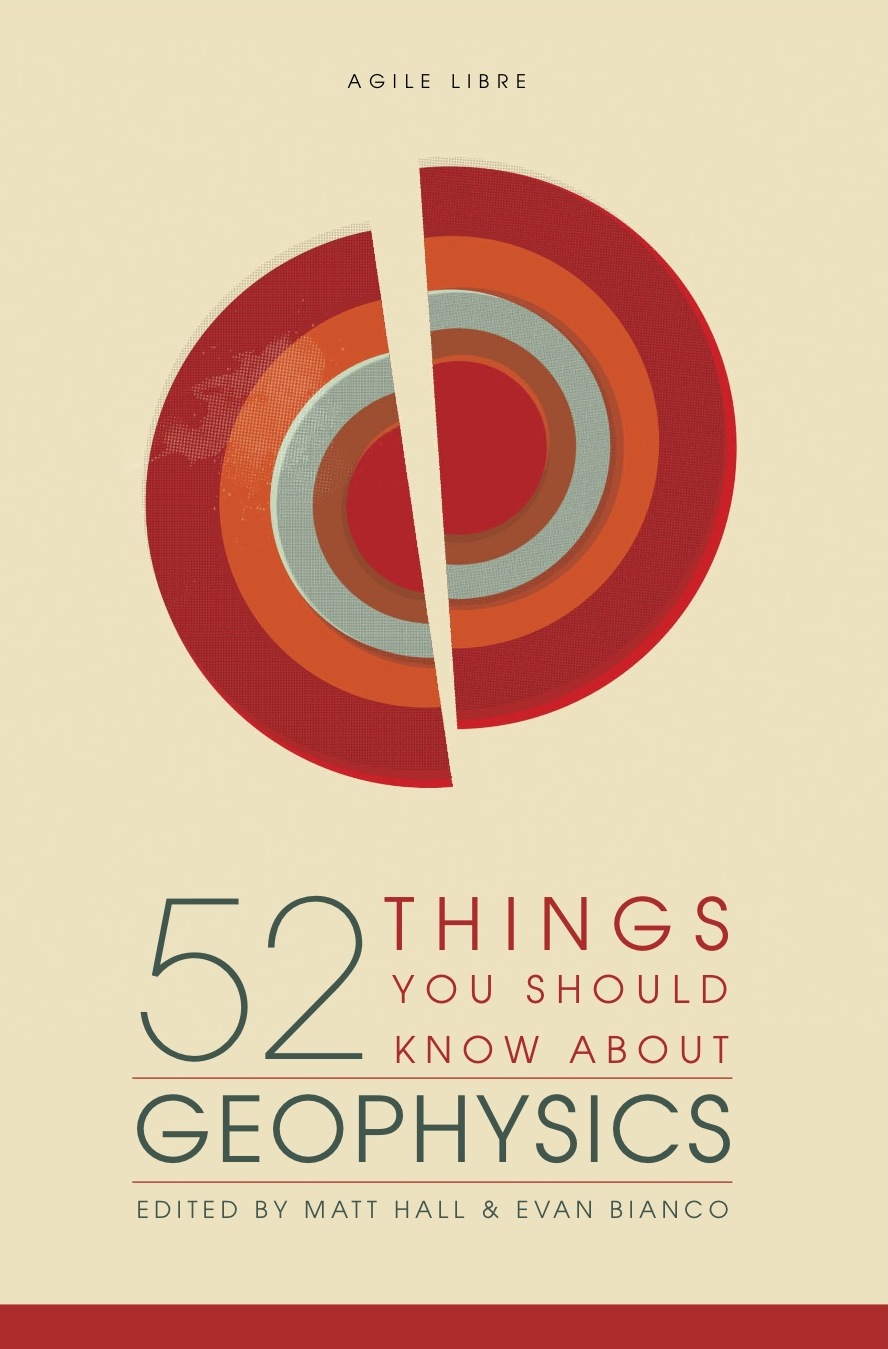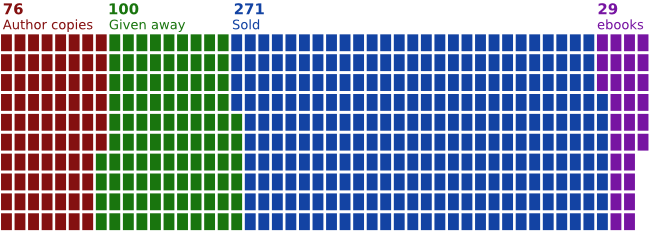On being the world's smallest technical publishing company
/ Four months ago we launched our first book, 52 Things You Should Know About Geophysics. This little book contains 52 short essays by 37 amazing geoscientists. And me and Evan.
Four months ago we launched our first book, 52 Things You Should Know About Geophysics. This little book contains 52 short essays by 37 amazing geoscientists. And me and Evan.
Since it launched, we've been having fun hearing from people who have enjoyed it:
Yesterday's mail brought me an envelope from Stavanger — Matteo Niccoli sent me a copy of 52 Things. In doing so he beat me to the punch as I've been meaning to purchase a copy for some time. It's a good thing I didn't buy one — I'd like to buy a dozen. [a Calgary geoscientist]
A really valuable collection of advice from the elite in Geophysics to help you on your way to becoming a better more competent Geophysicist. [a review on Amazon.co.uk]
We are interested in ordering 50 to 100 copies of the book 52 Things You Should Know About Geophysics [from an E&P company. They later ordered 100.]
The economics
We thought some people might be interested in the economics of self-publishing. If you want to know more, please ask in the comments — we're happy to share our experiences.
We didn't approach a publisher with our book. We knew we wanted to bootstrap and learn — the Agile way. Before going with Amazon's CreateSpace platform, we considered Lightning Source (another print-on-demand provider), and an ordinary 'web press' printer in China. The advantages of CreateSpace are Amazon's obvious global reach, and not having to carry any inventory. The advantages of a web press are the low printing cost per book and the range of options — recycled paper, matte finish, gatefold cover, and so on.
So, what does a book cost?
- You could publish a book this way for $0. But, unless you're an editor and designer, you might be a bit disappointed with your results. We spent about $4000 making the book: interior design about $2000, cover design was about $650, indexing about $450. We lease the publishing software (Adobe InDesign) for about $35 per month.
- Each book costs $2.43 to manufacture. Books are printed just in time — Amazon's machines must be truly amazing. I'd love to see them in action.
- The cover price is $19 at Amazon.com, about €15 at Amazon's European stores, and £12 at Amazon.co.uk. Amazon are free to offer whatever discounts they like, at their expense (currently 10% at Amazon.com). And of course you can get free shipping. Amazon charges a 40% fee, so after we pay for the manufacturing, we're left with about $8 per book.
- We also sell through our own estore, at $19. This is just a slightly customizable Amazon page. This channel is good for us because Amazon only charges 20% of the sale price as their fee. So we make about $12 per book this way. We can give discounts here too — for large orders, and for the authors.
- Amazon also sells the book through a so-called expanded distribution channel, which puts the book on other websites and even into bookstores (highly unlikely in our case). Unfortunately, it doesn't give us access to universities and libraries. Amazon's take is 60% through this channel.
- We sell a Kindle edition for $9. This is a bargain, by the way—making an attractive and functional ebook was not easy. The images and equations look terrible, ebook typography is poor, and it just feels less like a book, so we felt $9 was about right. The physical book is much nicer. Kindle royalties are complicated, but we make about $5 per sale.
By the numbers
It doesn't pay to fixate on metrics—most of the things we care about are impossible to measure. But we're quantitative people, and numbers are hard to resist. To recoup our costs, not counting the time we lovingly invested, we need to sell 632 books. (Coincidentally, this is about how many people visit agilegeoscience.com every week.) As of right now, there are 476 books out there 'in the wild', 271 of which were sold for actual money. That's a good audience of people — picture them, sitting there, reading about geophysics, just for the love of it.

The bottom line
My wife Kara is an experienced non-fiction publisher. She's worked all over the world in editorial and production. So we knew what we were getting into, more or less. The print-on-demand stuff was new to her, and the retail side of things. We already knew we suck at marketing. But the point is, we knew we weren't in this for the money, and it's about relevant and interesting books, not marketing.
And now we know what we're doing. Sorta. We're in the process of collecting 52 Things about geology, and are planning others. So we're in this for one or two more whatever happens, and we hope we get to do many more.
We can't say this often enough: Thank You to our wonderful authors. And Thank You to everyone who has put down some hard-earned cash for a copy. You are awesome.








 Except where noted, this content is licensed
Except where noted, this content is licensed